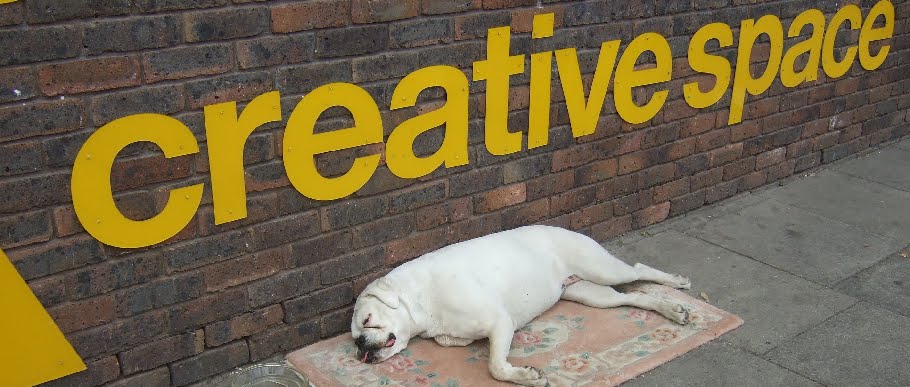And why is the council allowing the same developers to wriggle out of their commitments to improve public realm, plant trees and provide disabled parking spaces?
The red brick building which faces onto New Cross Road and the smaller, grey/brown bricked block are part of the same development by Kitewood Estates which created a total of 44 new homes; 35 for private ownership and 9 for social rent. The flats for social rent are located in the lower block on Watson's Street, at the end of the development furthest from New Cross Road - the entrance, or 'poor door', to the social housing is in the extreme left of the picture below.
Not a single one of the private flats, which have separate entrances closer to New Cross Road, is occupied; they have lain empty since the block was finished.
The entrance to the low-rise flats has a sign propped in the window warning that the properties are protected by a security firm; the corridor leading from the street to the flats on the main road still has protective covering on the floor and several notices in the door warning that entry is forbidden and giving a phone number for deliveries.
But the social housing is already occupied and the pavement has been like this for months. Surely this is not how it is supposed to be?
Indeed not - the planning application for the block (which was initially refused by Lewisham Council but which was passed at appeal) gives details of the soft landscaping and public realm improvements that the developer was promising.
You can get a clue from the rendering below, although for the full details it's necessary to go to the drawings.
The plans promise six semi-mature trees (five London Plane trees, and one Tulip Tree) and six Witch Hazel shrubs next to the block, to soften its hard edges no doubt. Three mature trees were removed so that the block could be built.
The soft landscaping was even made one of the conditions when the application was given permission at appeal.
The inspector's report said:
All planting, seeding or turfing comprised in the landscaping scheme hereby approved shall be carried out in the first planting and seeding seasons following the occupation of the buildings, or the completion of the development, whichever is the sooner. Any trees or plants which within a period of 5 years from the completion of the development die, are removed or become seriously damaged or diseased, shall be replaced in the next planting season with others of similar size and species.As well as soft landscaping, the plans included the creation of four disabled parking bays (the ground floor flats are designed to be accessible for wheelchairs) and a delivery bay, presumably to service the retail units and/or allow parking for refuse collections.
Instead there is a mish-mash of asphalt, a wave of shabby paving stones that hug the edge of the block for dear life, and remnants of the concrete pavement that dates back long before the building work started. If you're walking down here watch your step, especially if you are old or unsteady on your feet - pity the few new residents who have to negotiate it on a daily basis.
When developers fail to deliver on this kind of commitment, and bugger off leaving the job unfinished, it's down to the council's planning enforcement team to sort it out. Officers have the power to investigate breaches and ensure that developers don't get away with cutting corners.
But Lewisham Council's planning enforcement team had other ideas. After the Deptford Society brought it to their attention last year, an 'investigation' was launched.
A copy of the officer's report, which was issued to the Deptford Society last week when they chased the issue up, came into my possession.
The report makes interesting, if jaw-dropping, reading.
Responsibility for enforcing the construction of disabled parking bays was dismissed with the excuse that "if parking is required to make the scheme acceptable then it would have been specified by the planning inspector as a condition for the development".
As for the public realm the comments confirm they couldn't even be arsed to visit the site:
"The aerial photos shows that the soft landscaping scheme has been substantially implemented; to the extent that the aerial photos only show a minor difference to what was approved as part of the appeal decision. The information gathered as part of the desktop study demonstrates that the conditions have been substantially met, and that any breaches of the planning conditions are only minor in nature."
Allowing a public pavement to be left in this state can only be described as negligent - not to mention a personal injury claim waiting to happen.
And who are the villains in the piece? Which money-grabbing developer is responsible for leaving newly-built flats empty while housing is in such short supply?
Ironically, while the original development was the work of Kitewood Estates and they are most likely responsible for the unfinished state of the public realm, since July 2016 the entire block has been owned by London & Quadrant Housing Trust, bought at a cost of nearly £15 million.










